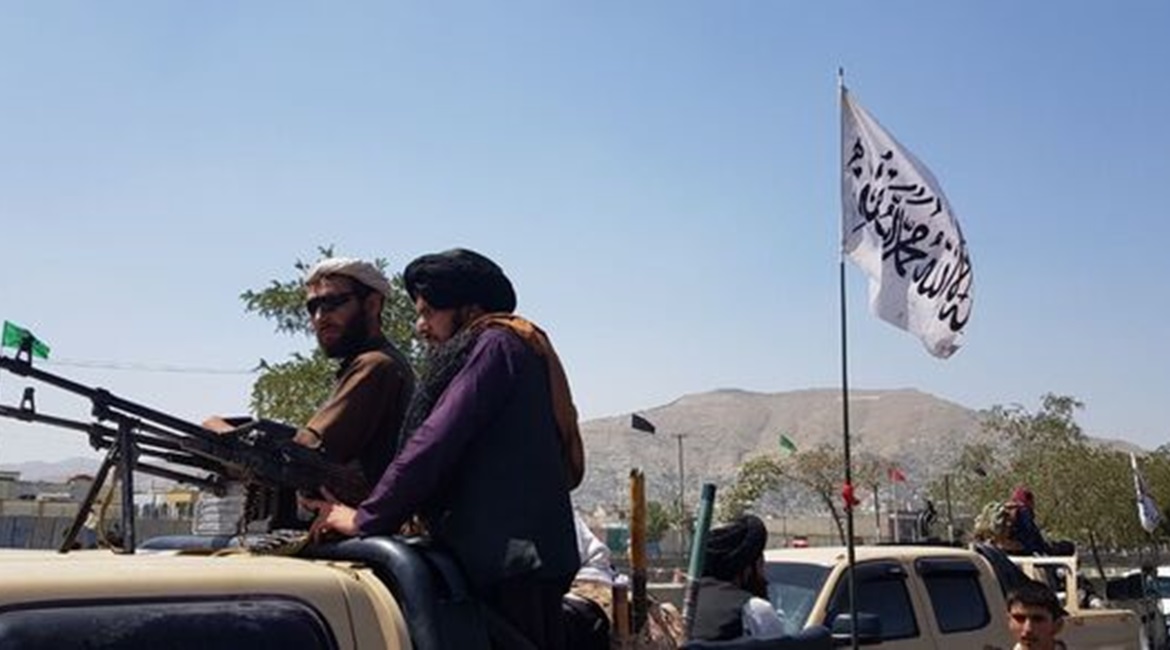
After capturing more than 20 Afghan provincial centres in a little over a week, the Taliban entered Afghanistan's capital, Kabul, on 15 August in what appears to have been the final stage of a rapid offensive aimed at regaining control over the Central Asian country almost two decades after the group was toppled from power by a US-led coalition.
Taliban fighters entered Kabul with apparently little or no resistance shortly after Afghan President Ashraf Ghani was reported to have left the country alongside some of his closest aides. Ghani later said in a Facebook post that he had left the country to avoid bloodshed.

Members of the Taliban patrol the streets of Kabul on 16 August after the Afghan capital fell to the group the previous day. (Sayed Khodaiberdi Sadat/Anadolu Agency via Getty Images)
Local media reported that the remaining representatives of the Afghan government were in talks with the Taliban over a peaceful transfer of power.
International media outlets broadcast footage of members of the group at the presidential palace, as well as at other government offices in Kabul, with reports emerging that the group is expected to formally declare the re-establishment of the ‘Islamic Emirate of Afghanistan' and speculation that Taliban leader Mullah Abdul Ghani Baradar, who has already declared victory over the US-backed Afghan government, would lead the country.
Video footage was also shown of military helicopters ferrying staff from Western embassies to Hamid Karzai International Airport, which was closed for commercial flights to enable the swift evacuation of diplomatic personnel and other staff, as well as Afghan special immigrant visa (SIV) applicants and allies still inside the country.
Looking to read the full article?
Gain unlimited access to Janes news and more...




